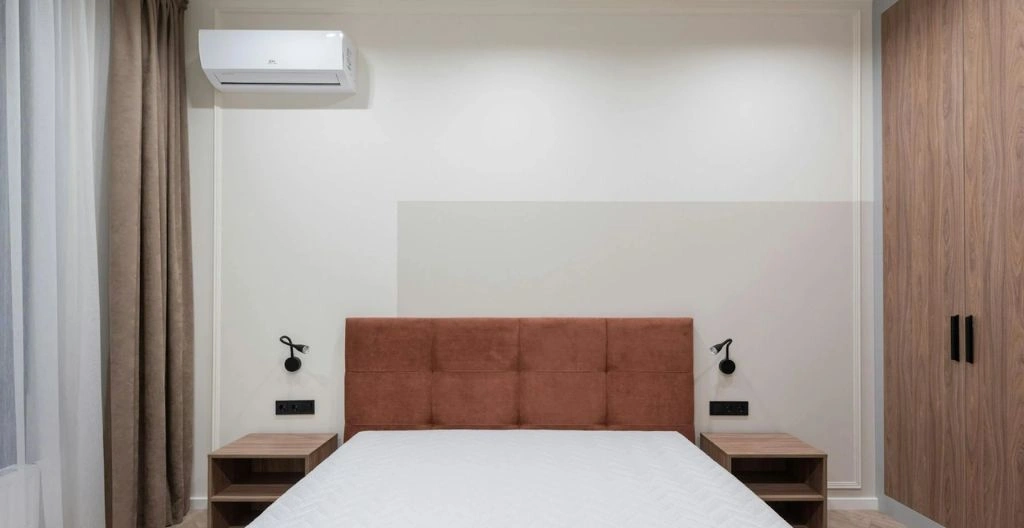As temperatures rise, the need for efficient and effective cooling systems becomes more essential. Homeowners, business owners, and builders alike are faced with the decision of which air conditioning system to choose. Two popular options are ductless mini splits and traditional air conditioners (AC). Both have their own sets of benefits and challenges, and choosing between the two often comes down to understanding the technology behind each system, how they work, and their suitability for different environments.
This article will provide a comprehensive technological comparison between ductless mini splits and traditional air conditioner, examining the key factors that influence their performance, efficiency, and installation. We will also discuss the trade-offs involved when choosing between the two, the challenges each approach presents, and the considerations that should guide your decision.
Understanding the Basics: Ductless Mini Splits vs. Traditional Air Conditioners
Traditional Air Conditioners
Traditional air conditioners typically refer to central air conditioning systems, which are most commonly used in larger homes, offices, and commercial buildings. These systems rely on ducts to circulate cool air throughout the space. They are made up of two primary components: an outdoor unit (the condenser) and an indoor unit (the evaporator). The condenser expels heat outside, while the evaporator cools the air that is pushed through the ductwork into various rooms or zones.
Advantages of Traditional Air Conditioners:
- Whole-House Cooling: Central air conditioners are designed to cool an entire building efficiently, making them ideal for larger homes or businesses.
- Established Technology: Central air systems have been in use for decades, and their technology is well-understood by HVAC professionals.
- Comfort: These systems offer a consistent and uniform temperature throughout the entire space.
Disadvantages of Traditional Air Conditioners:
- High Energy Consumption: The use of ductwork results in energy loss, which can make traditional systems less energy-efficient.
- Installation Complexity: Installing a central air system requires a significant amount of space and ductwork, which can be costly and intrusive.
- Less Flexibility: Since air is distributed through ducts, it is difficult to control the temperature of individual rooms or zones.
Ductless Mini Splits
Ductless mini splits, on the other hand, are an alternative air conditioning system that eliminates the need for ducts entirely. They consist of two main components: an outdoor unit (similar to the traditional AC) and one or more indoor air-handling units. The indoor units are mounted on the wall and are connected to the outdoor unit via refrigerant lines. Each indoor unit can independently cool a specific room or zone.
Advantages of Ductless Mini Splits:
- Energy Efficiency: Without the need for ducts, mini splits are much more energy-efficient, as there is no energy loss associated with ductwork.
- Zoned Cooling: Ductless mini splits provide the flexibility to cool individual rooms or zones, offering customizable comfort.
- Space-Saving: The compact design of ductless units means they take up far less space compared to traditional air conditioners.
- Easy Installation: Installation is simpler and less invasive, with no ductwork required. It also requires fewer modifications to the home or business structure.
Disadvantages of Ductless Mini Splits:
- Higher Upfront Cost: While installation is easier, ductless mini splits tend to have a higher initial cost, especially if multiple units are needed.
- Aesthetic Concerns: The visible indoor units may not appeal to everyone in terms of aesthetics.
Key Technological Differences
1. Efficiency and Energy Use
One of the most significant differences between ductless mini splits and traditional air conditioners lies in their efficiency. Traditional air conditioners, which rely on ductwork, often lose energy as cool air travels through ducts. Ductwork can account for up to 30% energy loss, especially if the ducts are improperly sealed or located in unconditioned spaces like attics or crawl spaces.
Ductless mini splits, on the other hand, avoid this energy loss by using refrigerant lines that connect the indoor and outdoor units directly. This setup results in higher efficiency and lower energy consumption. Furthermore, mini splits typically use inverter technology, which adjusts the compressor speed based on cooling needs, allowing the system to run continuously at lower power when the desired temperature is reached. This makes mini splits ideal for maintaining energy-efficient cooling with minimal fluctuations in temperature.
In contrast, traditional air conditioners cycle on and off to maintain the desired temperature, which can lead to more energy usage over time.
2. Installation Requirements
Installing a traditional air conditioner requires the installation of ductwork that can be expensive, time-consuming, and disruptive. The duct system must be properly sized and installed to ensure even airflow and distribution. Retrofitting an existing building to accommodate ductwork can also be costly and complicated.
By contrast, the installation of ductless mini splits is much less invasive. The outdoor unit is typically installed on an exterior wall, and a small hole is drilled to connect it to the indoor units via refrigerant lines. No extensive ductwork is required, making mini splits a more flexible solution for homes without existing duct systems or for those seeking an easy installation process. Installation can often be completed in a day, with less disruption to the home’s structure.
3. Zoning Capabilities
A significant technological benefit of ductless mini splits is their ability to provide zoned cooling. With traditional air conditioners, the cooling system is usually one-size-fits-all, meaning the entire house is cooled to the same temperature. This can result in energy waste if certain rooms are unoccupied or if different rooms require different temperatures.
Ductless mini splits allow for individual temperature control in each room or zone. Each indoor unit operates independently, so you can cool different areas of your home or office to different temperatures. This zoning feature is particularly beneficial in homes with rooms that are rarely used or in buildings with rooms that face different environmental conditions (e.g., sunny rooms vs. shaded rooms).
Zoning also makes ductless systems ideal for multi-story homes, where temperature regulation can be difficult with traditional air conditioners. It allows for better comfort and energy savings, as you only cool the spaces you use.
4. Maintenance and Upkeep
Both ductless mini splits and traditional air conditioners require regular maintenance, such as filter cleaning or replacement, but the maintenance needs of ductless systems are typically simpler. Ductless mini splits don’t have extensive ductwork, so there’s less risk of debris buildup or mold growth within the ducts, which is a common issue with traditional systems.
Traditional air conditioners require regular duct inspections and cleaning to maintain efficient airflow and prevent dust and allergens from circulating throughout the house. Additionally, ducts that are not properly sealed can lead to energy loss. Mini splits, being ductless, eliminate these issues.
5. Climate and Space Suitability
While traditional air conditioners are designed to cool larger areas or entire homes, ductless mini splits excel in providing flexibility. They work best in spaces where ductwork is not feasible or where zoning and energy efficiency are priorities. They are ideal for smaller homes, apartments, or spaces that require individualized temperature control, such as garages, basements, and converted spaces.
In climates that experience extreme temperature fluctuations, mini splits can be a more adaptable solution, as they are capable of both cooling and heating. Many ductless systems come with heat pump capabilities, providing year-round climate control without needing a separate heating system. However, in regions with extreme cold temperatures, traditional air conditioners with additional heating systems may still be preferred.
Trade-Offs and Considerations
When deciding between ductless mini splits and traditional air conditioners, there are several trade-offs to consider:
- Upfront Cost: Ductless mini splits generally have a higher initial cost due to their advanced technology and installation requirements. However, over time, the energy savings and zoning capabilities may offset this higher investment.
- Energy Efficiency: If energy efficiency is a priority, ductless mini splits typically outperform traditional air conditioners due to their lack of ductwork and advanced inverter technology.
- Comfort Needs: For larger homes or buildings that require cooling across multiple rooms, a traditional air conditioner may be more practical, especially if you don’t need the zoning capabilities of a mini split.
- Space Considerations: Ductless mini splits are ideal for smaller homes or spaces where traditional ductwork would be intrusive or impractical. However, they may not be suitable for larger homes unless multiple units are installed.
- Long-Term Benefits: Ductless mini splits tend to offer better long-term benefits in terms of efficiency, comfort, and ease of maintenance. Traditional air conditioners, while reliable, may incur higher maintenance costs over time due to the need to maintain the ductwork.
Wrapping Up
Both ductless mini splits and traditional air conditioners have their advantages and are suitable for different needs. The decision ultimately comes down to factors like the size of your space, your energy efficiency goals, your budget, and the level of comfort and customization you require.
If you’re looking for a more energy-efficient, flexible, and space-saving solution for smaller spaces or specific zones, ductless mini splits are a great choice. On the other hand, if you need to cool a larger home or office and want a single system to control the temperature throughout, traditional air conditioners may be a better fit.
Understanding the technology and considering the long-term benefits will help you make a more informed decision that suits your cooling needs.







